|
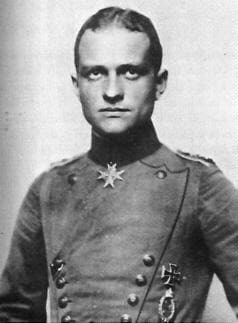
|
|||||||||||||||||||||||
|

|
|||||||||||||||||||||||

|
Manfred von Richthofen was born on May 2, 1892 in Breslau, Germany (now Wroclaw Poland). He died on April 21, 1918 in the skies over Vaux sur Somme, France. He was 25 years old. He was called der rote Kampfflieger (The Red Battle-Flyer) by his own people, le petit rouge by the French, and the Red Baron by the English. In a time of wooden and fabric aircraft, when twenty air victories insured a pilot legendary status and the coveted Pour Le Mérite, Richthofen had eighty victories, and is regarded to this day as the ace of aces.
Manfred von Richthofen was born the son of Major Albrecht von Richthofen, a Prussian nobleman and his wife, Kunigunde. (The name Richthofen means "court of judgement" and was bestowed by the Holy Roman Emperor Leopold I.) Manfred was the eldest of three sons (the eldest child was his sister, Ilse). He was enrolled at age 11 at the military school at Wahlstatt, and then attended the Royal Military Academy at Lichterfelde. Manfred was a far better athlete than he was a scholar, and applied his horseback riding skills to become a cavalry officer. He was commissioned in April, 1911 in the 1st Regiment of Uhlans Kaiser Alexander III. He was promoted to Leutnant in 1912. Unfortunately, twentieth century warfare had little use for mounted cavalry. The invention of the machine gun had led to the need for combat operations to be carried out from trenches dug into the country side. When war broke out in August, 1914, Richthofen looked to the air service for a new challenge. He initially joined the Fliegertruppe (air service) in 1915 as an observer because the training course was shorter and would get him to combat faster. After meeting Oswald Boelcke, who would remain his hero and idol, Manfred was committed to becoming a pilot. After only 24 hours of flight training from his friend, Oberleutnant Georg Zeumer, he made his first solo flight on October 10, 1915. (He crashed his plane attempting to land.) |

| Fokker DR.I | ||||||||||||||||||||||||||||||||
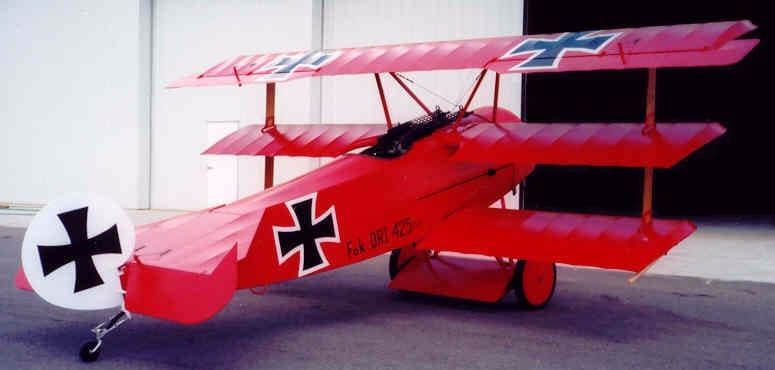 |
||||||||||||||||||||||||||||||||
|

|
The Death of Manfred von Richthofen
On April 21 1918, Richthofen followed the Sopwith Camel of Wilfred May far into British territory. The end of the war was only months off by this time, and the Germain air command faced both ever-improving British airplanes and their own dwindling numbers. The thrill of the hunt was all but gone for Baron von Richthofen, as most of his peers had already been killed and his own wounds agonized him. Though the German air doctrine he himself wrote stated that "one should never obstinately stay with an opponent which, through bad shooting or skilful turning, he has been unable to shoot down while the battle lasts until it is far on the other side", he chased his British quarry far deeper into enemy territory and far lower to the ground than his own doctrine permitted. May later said that it was only his erratic, untrained piloting which saved him. He followed the erratic path of the novice pilot until a single bullet, shot from behind him, passed diagonally through his chest. The shot is commonly believed to have come from Australian gunners on the ground, but might have also come from the guns of Canadian flier Arthur "Roy" Brown who was coming to May's aid. Manfred von Richthofen crashed into a field alongside the road from Corbie to Bray. His body was recovered by British forces, and he was buried with full military honours. Richthofen's body was later exhumed and reburied in the family cemetery at Wiesbaden. Manfred's brother, Lothar (also a Pour le Mérite recipient) was himself recovering from being shot down when his older brother was killed in combat. He returned to Jagdgeschwader 1 and carried on the Richthofen tradition of fearlessness in combat in a blood-red fighter. Lothar was shot down again on August 13th, 1918, and forced into retirement with 40 kills. Manfred's eventual successor was Hermann Göring, who chose to paint his aircraft all-white, ending the reign of the blood-red German fighters. |
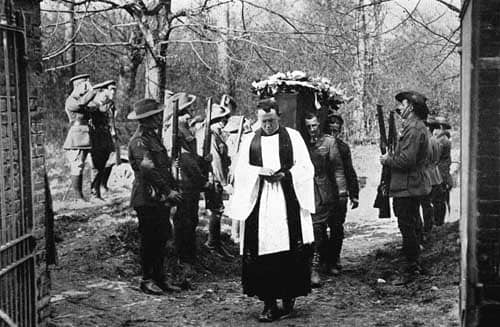 |
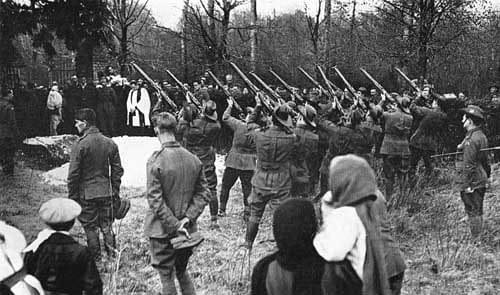 |

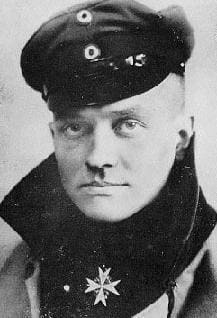 |
1892 - 1918 |
